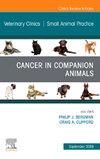呼吸性酸中毒快速参考。
IF 2
3区 农林科学
Q2 VETERINARY SCIENCES
Veterinary Clinics of North America-Small Animal Practice
Pub Date : 2025-10-04
DOI:10.1016/j.cvsm.2025.09.003
引用次数: 0
摘要
本文讨论了呼吸性酸中毒,这是一种由肺泡通气不足导致二氧化碳浓度升高引起的疾病。它强调了准确的血气分析对诊断的重要性,强调了二氧化碳分压测量在危险动物中的作用,例如那些镇静或机械通气的动物。病因包括神经肌肉无力、气道阻塞和药物作用。治疗包括解决主要原因,提供氧气治疗,必要时使用机械通气。及时识别和治疗呼吸性酸中毒对进行性通气不足或颅内高压的动物至关重要。本文章由计算机程序翻译,如有差异,请以英文原文为准。
A Quick Reference on Respiratory Acidosis.
This article discusses respiratory acidosis, a condition caused by inadequate alveolar ventilation leading to elevated Pco2 levels. It highlights the importance of accurate blood gas analysis for diagnosis, emphasizing the role of Pco2 measurement in animals at risk, such as those on sedation or mechanical ventilation. Causes include neuromuscular weakness, airway obstruction, and drug effects. Management involves addressing the primary cause, providing oxygen therapy, and using mechanical ventilation if necessary. Recognizing and treating respiratory acidosis promptly can be crucial in animals with progressive causes of hypoventilation or intracranial hypertension.
求助全文
通过发布文献求助,成功后即可免费获取论文全文。
去求助
来源期刊
CiteScore
3.80
自引率
0.00%
发文量
123
审稿时长
18-36 weeks
期刊介绍:
Veterinary Clinics of North America: Small Animal Practice offers you the most current information on the treatment of small animals such as cats and dogs, updates you on the latest advances, and provides a sound basis for choosing treatment options. Published bi-monthly—in January, March, May, July, September, November—each issue focuses on a single topic in small animal practice, including endocrinology, fluids and electrolytes, gastroenterology, infectious diseases, neurology, oncology, urology, respiratory issues , surgical information, small animal behavior, laboratory medicine, imaging methods, and nutrition.

 求助内容:
求助内容: 应助结果提醒方式:
应助结果提醒方式:


